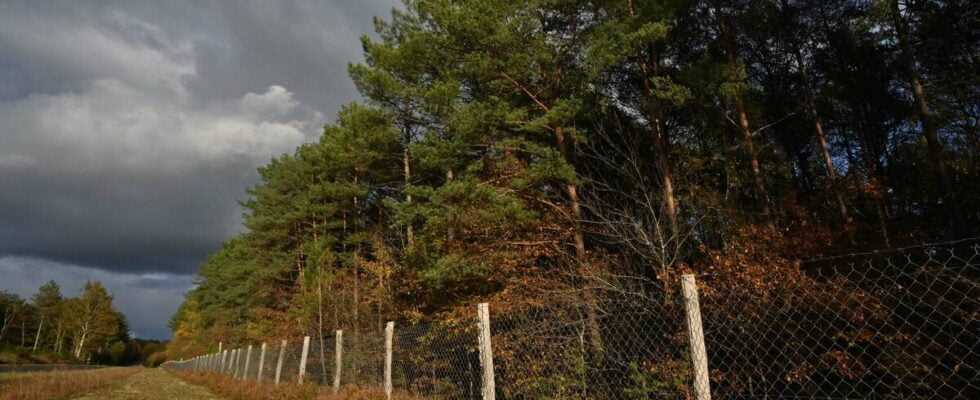The elected officials of the Palais Bourbon will examine this Monday at first reading a bill aimed at limiting the installation of high fences in natural spaces, accused of disfiguring the countryside and promoting drifts in certain hunting practices.
The senators, with a majority of the right, seize the file of the engrillagement. They will discuss an aberration: wealthy landowners roast vast wooded parks and turn them into enclosures to hunt large numbers of animals. The practice has been developing for twenty-five years in Sologne, where today there are 4,000 kilometers of high fences, but now extends to other regions, from Picardy to the Landes, via Normandy or the Brenne.
Several local elected officials, from all sides, went there with their bill. This Monday, the Senate will examine at first reading the text carried by Senator LR du Loiret, Jean-Noël Cardoux, president of the Hunting and Fishing study group. Filed on October 12, it was recently clarified and completed in the Committee on Economic Affairs with the aim of reaching a bill “Balanced”, according to its rapporteur Laurent Somon (LR).
“Fighting the imprisonment of nature”
And once is not customary, the subject is relatively consensus politically. At the end of December, the Secretary of State for Biodiversity, Bérangère Abba, announced that she would support this bill in the Senate. “Ruptures of ecological continuity, health problems, absurdity of letting go when we know our regulatory needs and what to say about the ethics of these hunts which are not. Yes, these practices must stop ”, argued the member of government on Twitter.
For Sophie Primas, LR president of the Economic Affairs Committee, “Combating the imprisonment of nature behind fences must unite us all, hunters, non-hunters, owners and walkers”.
The text aims to prohibit high fences that were installed after 2005 (date of the law on the development of rural territories), to define new models of fences better integrated into the natural environment, and to remove hunting enclosures. The fences must not exceed 1.20 meters in height and must allow the passage of wildlife on the ground. The bill provides that they cannot injure or be used to trap game, while allowing the protection of crops, forest regeneration as well as the maintenance of public interest fences (major transport axes, military sites, etc.) .
Fines and Sanctions
The deadline for compliance would be seven years, with, in the event of non-compliance, a three-year prison sentence and a fine of 150,000 euros. The agents of the French Biodiversity Office (OFB) will be able to check the enclosures prior to 2005 which will remain.
Another flagship provision of the text: to compensate for the lowering of fences and encourage their disappearance, the bill would create a 5th class fine (fine up to 1,500 euros) for entering private rural or forest property. Although presented to the Senate, the text will not then automatically pass to the National Assembly. The latter is already busy closing the current files before the renewal of the hemicycle in a few months.
The fight against the encrustation of natural spaces is also a concern in the lower house. The deputy LREM of Cher, François Cormier-Bouligeon, notably tabled last month a bill aiming to “fight against the encrustation of French forests”, via the prohibition of “Animal carnage” that are practiced there.
